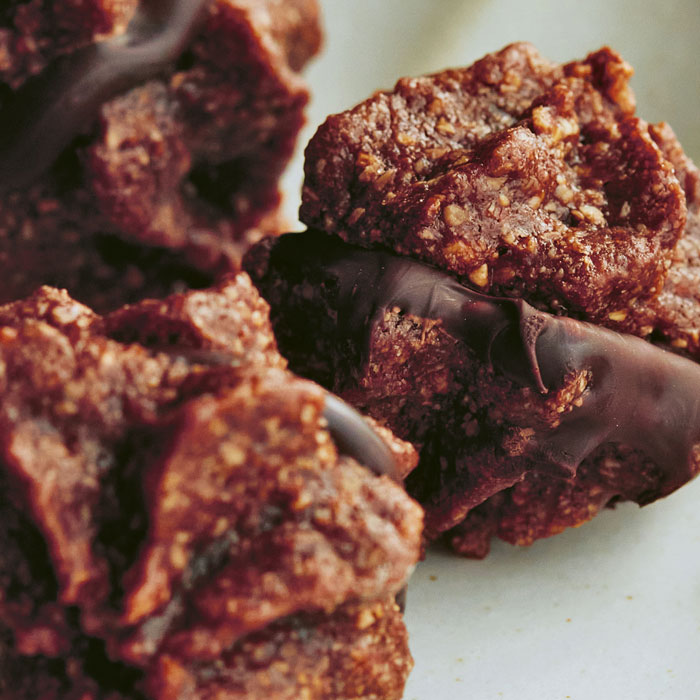
For the biscuits
For the filling
These sandwich biscuits are named after Alassio: a beautiful Ligurian town and renowned holiday destination, where they were invented in the early 20th century, allegedly to create a sweet souvenir that the many tourists could bring back home and remember the place by.
These little treats are more than simple biscuits: they are flavoursome, chocolatey and indulgent little pastries made with a generous helping of roasted hazelnuts and cocoa powder. They are delicious on their own but are the perfect match for a cup of hot chocolate. They are naturally gluten-free and, as long as the chocolate is, also dairy-free. The texture is satisfyingly chewy, but they must not be overbaked as they may become very hard very quickly. Some bakers advocate a 12-hour rest of the piped dough in the fridge before baking to create a drier and crispier shell. However, my dad has always used the straight-in-the-oven approach and it has never failed him: I have tested both methods and quite frankly I cannot justify to myself the hassle of having to find the fridge space to chill 2 trays of biscuits overnight…
The trickiest step in the process is undoubtedly piping the stiff dough, so make sure that you equip yourself with a durable piping bag, a wide enough star nozzle and… a pair of strong hands. Resist the temptation to add extra egg white to loosen the dough as this will result in flat pancakes rather than neatly shaped biscuits. If piping really does not do it for you, then wet your hands and mould the dough into small balls instead!
Make the biscuits
Assemble